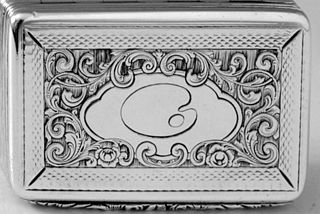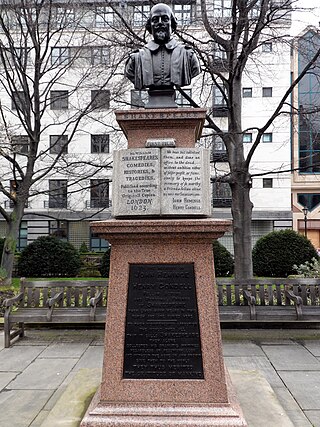William Fuller was dean of Ely and later dean of Durham. He was in serious trouble with parishioners and Parliament during the early 1640s.

Vedast or Vedastus, also known as Saint Vaast or Saint Waast, Saint Gaston in French, and Foster in English was an early bishop in the Frankish realm. After the victory of Tolbiac Vedast helped instruct the Frankish king Clovis in the Christian faith of his wife, Queen Clotilde.

Saint Vedast Foster Lane or Saint Vedast-alias-Foster, a church in Foster Lane, in the City of London, is dedicated to St. Vedast, a French saint whose cult arrived in England through contacts with Augustinian clergy.

Sir Edmund Shaa or Shaw was a London goldsmith, Sheriff of London in 1475 and Lord Mayor of London in 1482. Shaa lent money to Edward IV and, as mayor, was extensively involved in the coronation of Edward IV's brother Richard III. He was later knighted and made a member of the Privy Council.

St. Mary Staining was a parish church in Oat Lane, northeast of St. Paul's Cathedral, in the City of London. First recorded in the 12th century, it was destroyed in the Great Fire of London in 1666 and not rebuilt.

Cheap is a small ward in the City of London, England. It stretches west to east from King Edward Street, the border with Farringdon Within ward, to Old Jewry, which adjoins Walbrook; and north to south from Gresham Street, the border with Aldersgate and Bassishaw wards, to Cheapside, the boundary with Cordwainer and Bread Street wards. The name Cheap derives from the Old English word "chep" for "market".

St Dionis Backchurch was a parish church in the Langbourn ward of the City of London. Of medieval origin, it was rebuilt after the Great Fire of London to the designs of Christopher Wren and demolished in 1878.

Foster Lane is a short street within Cheap ward, in the City of London, England. It is situated northeast of St Paul's Cathedral and runs southbound Gresham Street to Cheapside.
Robert Brandon was an English goldsmith and jeweller to Queen Elizabeth I of England. A prominent member of the Goldsmiths' Company, Brandon was elected Chamberlain or treasurer of the City of London in 1583, a position he held until his death in 1591.
Sir Richard Martin was an English goldsmith and Master of the Mint who served as Sheriff and twice as Lord Mayor of the City of London during the reign of Elizabeth I.
Michael Rabbet was an English clergyman and translator of the Authorised King James Version of the Bible.

Francis Crump (1711-1800s) was a London silversmith producing mostly hollowware. He was apprenticed to Gabriel Sleath (1674–1756), who objected to Huguenot goldsmiths working in England, and on 23 November 1753 entered into a partnership with him.

John Thomas (1691–1766) was an English Bishop of Lincoln and Bishop of Salisbury.

André or Andrew Planché, or Planchè, was a jeweller, potter and theatre person, son of French Huguenot refugees. He lived in Derby, where he had at least four children.

John Lonyson or Lonison (1525–1582) was an English goldsmith and Master of the Mint in the reign of Elizabeth I.

The John Heminges and Henry Condell Memorial is a memorial to the actors John Heminges and Henry Condell – the editors of William Shakespeare's First Folio, published in 1623 – in the former churchyard of St Mary Aldermanbury on Love Lane, London EC2. The memorial is made from pink granite and is topped with a bust of Shakespeare by C. J. Allen, dated 1895.
Sleath is a surname. Notable people by that name include:
Dinah Gamon was an English silversmith.

Samuel Nixon was a portrait sculptor in London, England.
John Sleath (1767–1847) was an English cleric and High Master of St Paul's School, London. He was elected a Fellow of the Royal Society in 1820.














